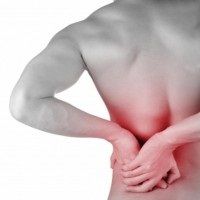Article
Evaluating the Use of Single-entity Hydrocodone to Treat Chronic Low Back Pain
Author(s):
Results from a 12-week study show that treatment with once-daily, single-entity hydrocodone formulated with abuse-deterrent properties is safe and effective compared with placebo.

Chronic low back pain remains among the most difficult chronic pain conditions to treat, due to its varying etiology, presentation, and a host of other patient-specific characteristics and symptoms. Although various forms of combination hydrocodone products are increasingly prescribed to manage this condition, and studies have shown evidence of short-term efficacy for pain relief and functional improvement, some patients and clinicians are concerned over hepatotoxicity risk (with products containing acetaminophen) and other risks associated with the non-opioid components of these medications.
Noting there is an unmet need for evidence supporting the safety and efficacy of treatment for chronic low back pain with a single-entity hydrocodone product, at the 2014 annual clinical meeting of the American Academy of Pain Management, in Phoenix, AZ, Warren Wen, PhD, and colleagues presented results from a study that evaluated “the analgesic efficacy and safety of single-entity, once-daily hydrocodone 20 mg to 120 mg tablets formulated with abuse-deterrent properties (HYD) in opioid-naïve and —experienced patients with uncontrolled moderate to severe chronic low back pain.”
For this multicenter, double-blind, placebo-controlled study, researchers randomized 588 patients (out of 905 who were treated with HYD during the open-label titration period) to continue treatment with HYD or placebo. In this part of the study, 296 patients received 20-120 mg once-daily HYD (average daily dose 57 mg) and 292 received placebo.
According to the study abstract, “Patients randomized to placebo were tapered off in a blinded taper with HYD according to a pre-specified tapering schedule, 3 days on each stepdown dose (reduced by 25-50% from the previous dose). Patients were allowed to use rescue medication (immediate-release oxycodone 5 mg tablet) up to 6 doses (6 tablets) per day depending on their randomized dose level.”
Patients were evaluated using daily pain scores (0-10 Numeric Rating Scale) at initial screening, and again prior to initiation of the double-blinded period of the study. The authors reported that mean average daily pain scores were 7.4 at screening and 2.8 prior to randomization for both HYD and placebo groups.
More than three-quarters (77%) of patients who received HYD in the double-blind period completed the 12-week treatment, compared with 72% of patients who received placebo. Discontinuation rates in the HYD group were similar for lack of therapeutic effect (5%) and adverse events (6%). In the placebo group 15% of patients discontinued treatment due to lack of therapeutic effect, while 3% dropped out due to adverse events.
Analysis of the data indicated that “HYD demonstrated superior pain reduction over placebo at week 12 of the double-blind period (P = .0016),” while the proportions of patients achieving ≥ 30% and ≥ 50% improvement in pain from screening baseline also favored HYD over placebo (P = .0033 and .0025, respectively).”
Based on these results, the authors concluded that once-daily single-entity hydrocodone formulated with abuse-deterrent properties was a safe, effective, and generally well tolerated treatment for chronic low back pain





